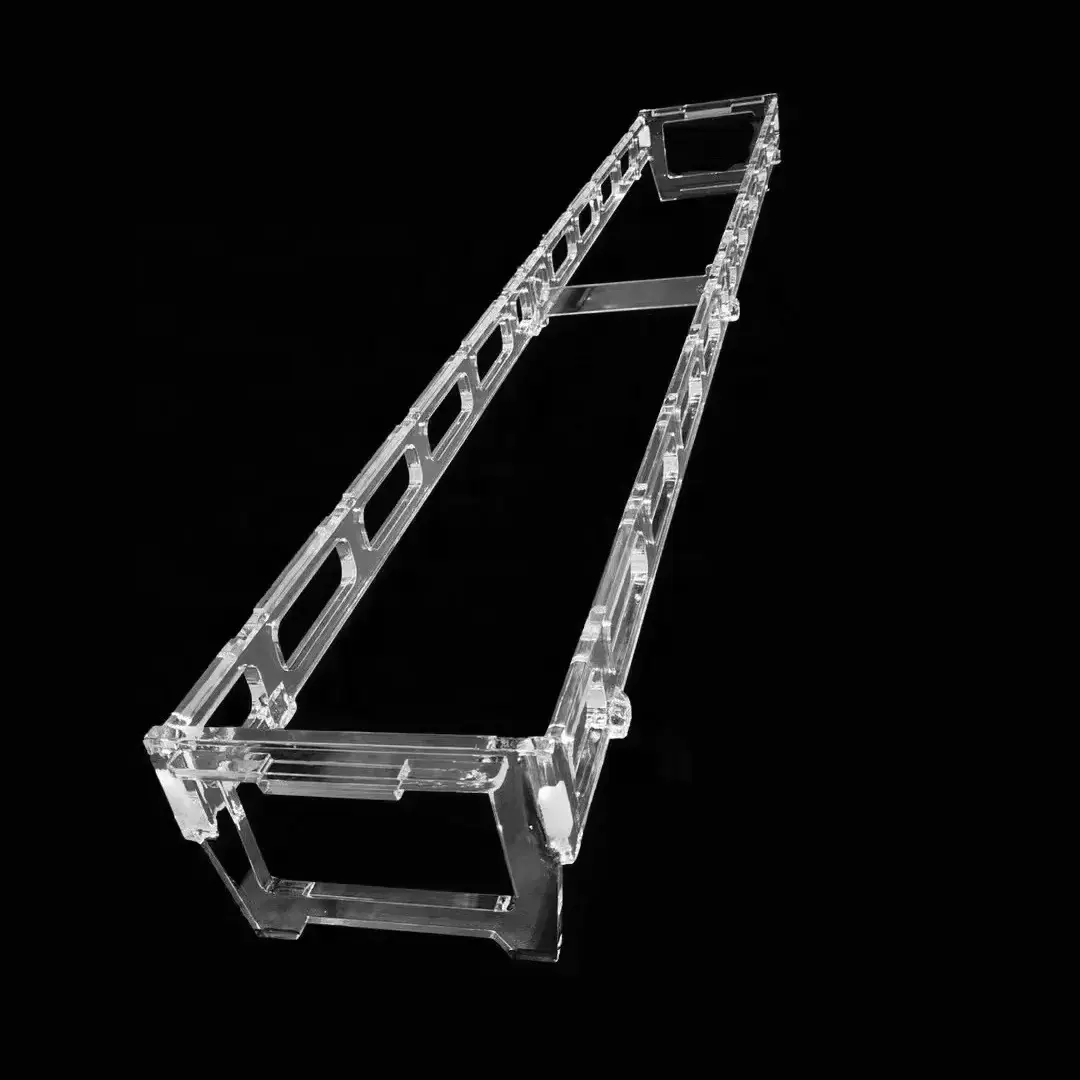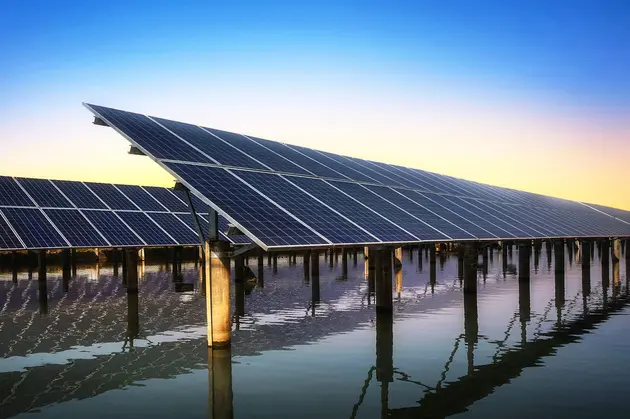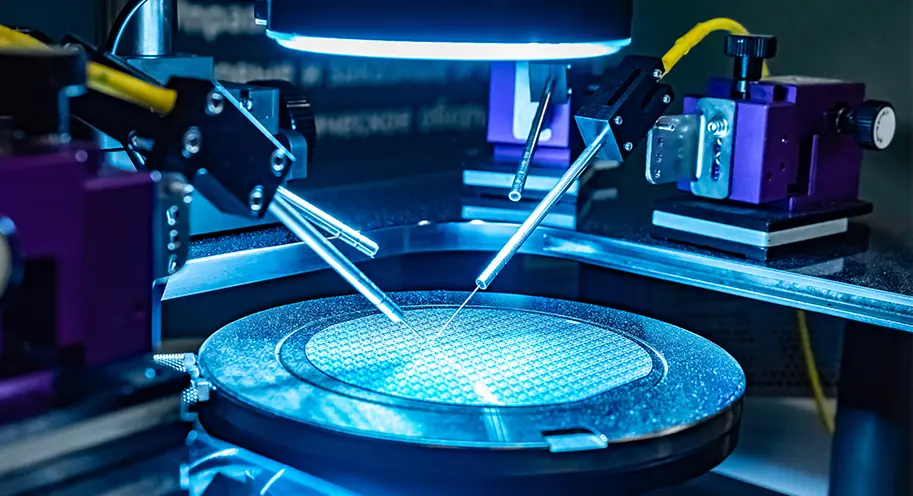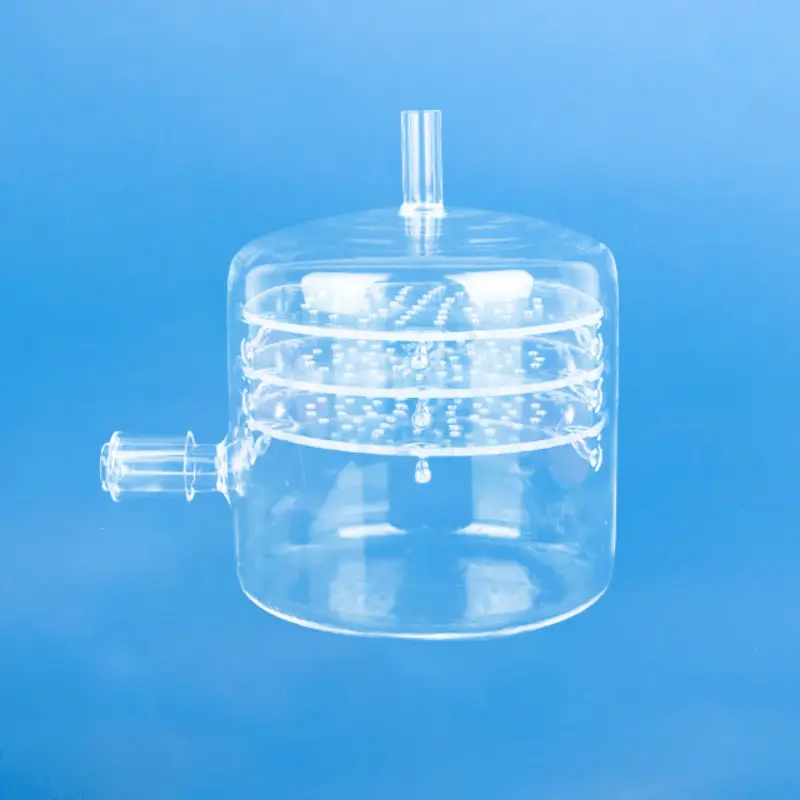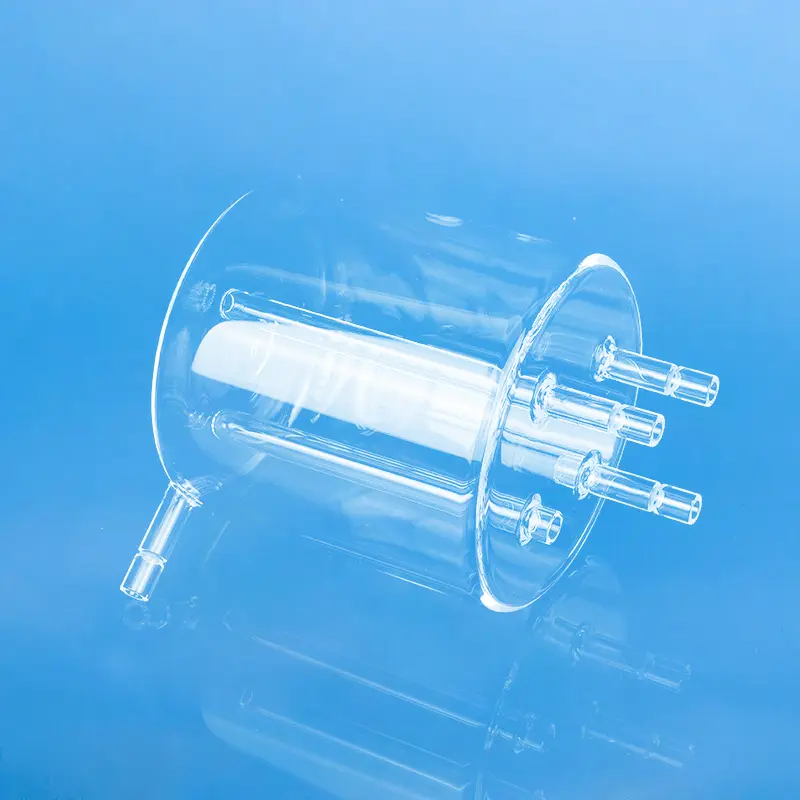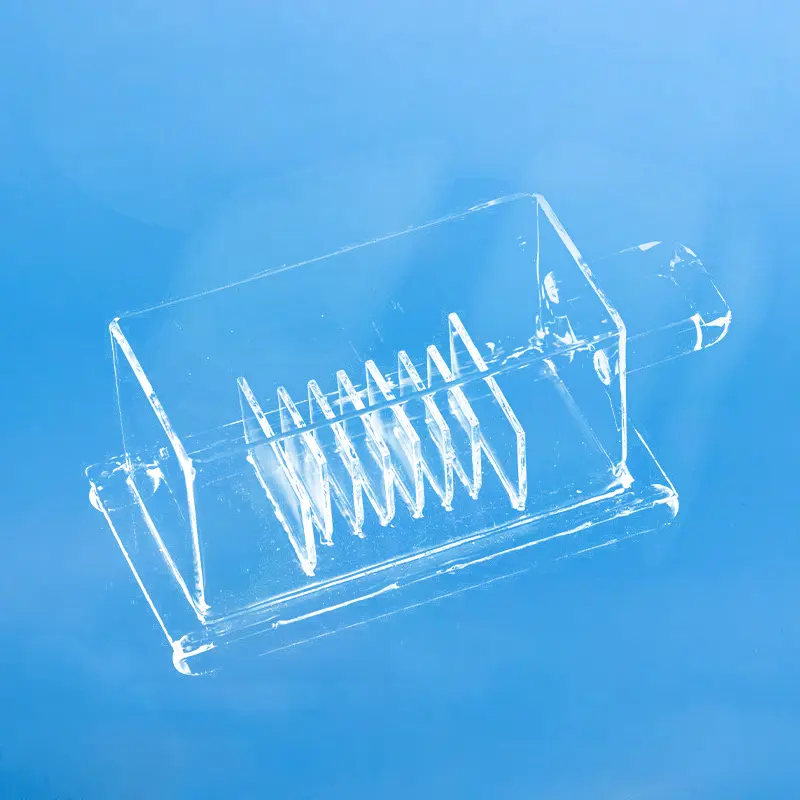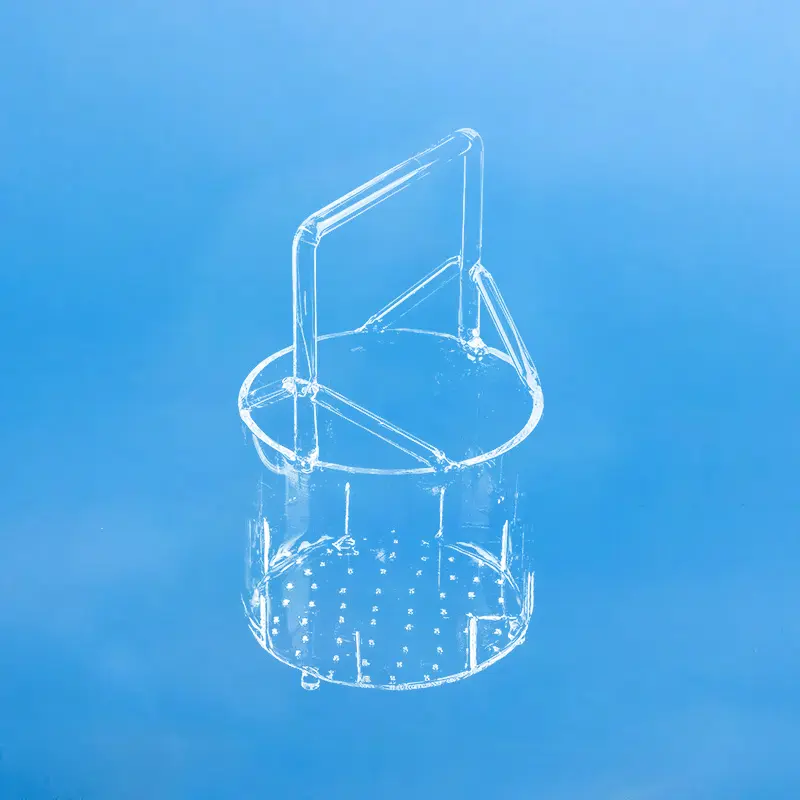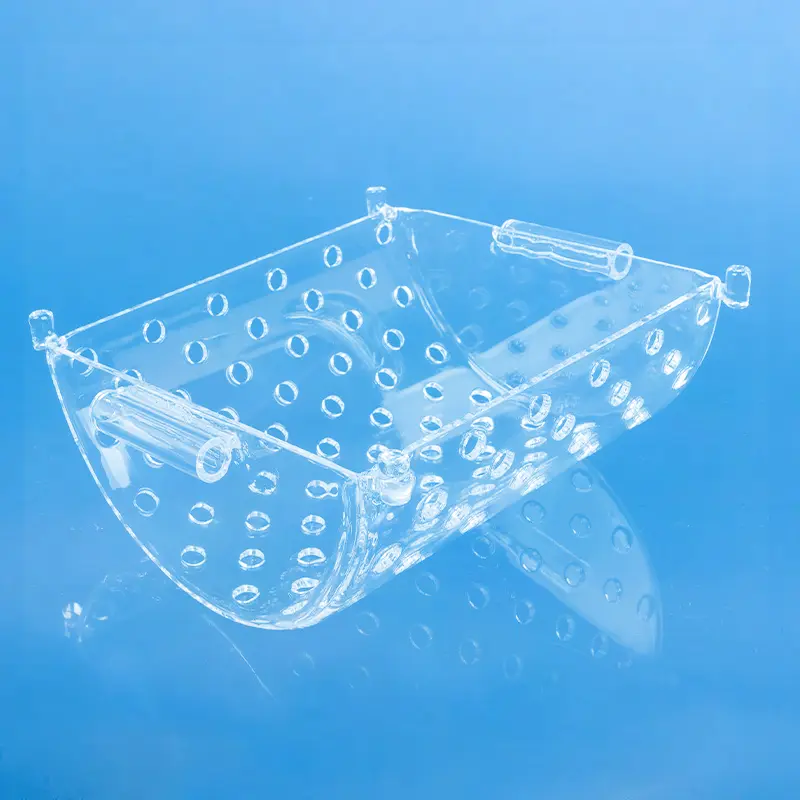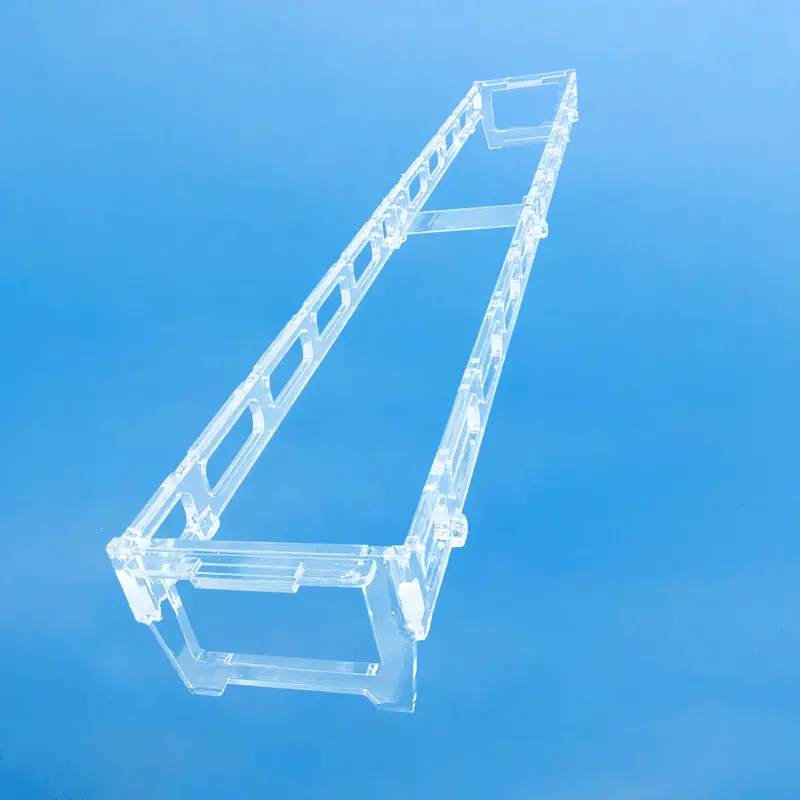A quartz boat carrier is a boat-shaped tray or support structure primarily made from quartz. Due to the excellent high-temperature resistance, corrosion resistance, and high light transmission properties of quartz, quartz boat carriers are widely used in the photovoltaic and semiconductor industries. They are primarily used for carrying silicon wafers, battery cells, or other materials requiring processing, providing support and transport during processes such as diffusion, etching, and cleaning.
| Property Content | Property Values |
|---|---|
| SiO2 | 99.99% |
| Density | 2.2×10³ kg/cm³ |
| Hardness | 5.5 - 6.5 Mohs' Scale 570 KHN 100 |
| Tensile Strength | 4.8×10⁷ Pa (N/mm2) (7000 psi) |
| Compression Strength | >1.1×10⁹ Pa (160,000 psi) |
| Coefficient of Thermal Expansion | 5.5×10⁻⁷ cm/cm·°C (20°C-320°C) |
| Thermal Conductivity | 1.4 W/m·°C |
| Specific Heat | 670 J/kg·°C |
| Softening Point | 1730°C (3146°F) |
| Annealing Point | 1210°C (2210°F) |
| Strain Point | 1120°C (2048°F) |
| Work Temperature | 1200°C (2192°F) |
| Electrical Resistivity | 7×10⁷ ohm cm (350°C) |
| Size | Customized |
| Logo | Customized Logo Accept |
High-Temperature Resistance
Quartz has a melting point of 1713°C, enabling quartz boat carriers to maintain stability in high-temperature environments and meeting the demands of high-temperature processes in the photovoltaic and semiconductor industries.
Corrosion Resistance
Quartz possesses excellent resistance to most acids, bases, and organic solvents, ensuring that quartz boat carriers are not easily damaged during chemical processes.
High Light Transmission
While quartz’s high light transmission is often utilized in optical applications, in quartz boat carriers, this property mainly manifests in its controlled absorption and reflection of light, contributing to the stability of processing environments.
Application Scenario
A quartz boat carrier is a device used to carry and support quartz boats, often in semiconductor manufacturing equipment, particularly as a key support component in diffusion furnaces in the photovoltaic industry.
Quartz boat carriers are primarily used in semiconductor manufacturing, the photovoltaic industry, and other sectors that require processing silicon wafers or other thin materials. In semiconductor manufacturing, they are used in wafer processing, heat treatment, and chemical reaction steps.
Quartz boat carriers have a relatively short service life, typically 3-6 months, whereas silicon carbide boat carriers have a longer service life, potentially reaching 5 years or more. Silicon carbide boat carriers are gradually replacing quartz boat carriers in certain conditions due to their superior high-temperature strength and long-lasting durability.
Frequently asked questions
Quartz glass is a hard and brittle material with excellent physical and chemical properties, extremely high mechanical hardness, good electrical insulation, high temperature and corrosion resistance, low and stable delay performance, good light transmittance, etc. It is widely used in semiconductors, optics, electricity, chemistry, aerospace, automobiles and other fields. Hard and brittle materials are difficult to process, and many fields urgently need cutting processes with small edge collapse, less material loss, low cross-section roughness, and a wide cutting thickness range. The traditional cutting method of quartz glass is mechanical cutting, that is, wheel cutting. Non-traditional cutting methods include water jet cutting, electrochemical discharge wire cutting, continuous laser cutting, etc. Mechanical cutting has low cost, but the contact between the wheel and the material causes large tool wear, and the material is easily contaminated by the tool. Quartz glass is prone to edge collapse, microcracks, and residual stress, which affects the strength and performance of the material! It is difficult to achieve curve cutting and requires post-processing, such as grinding and polishing. Laser cutting does not directly contact the material, has no contact stress, and can perform complex curve cutting. Picosecond laser has the advantages of small spot diameter, high precision, short action time with the material, and small action area, and is suitable for the processing of hard and brittle materials.
。

